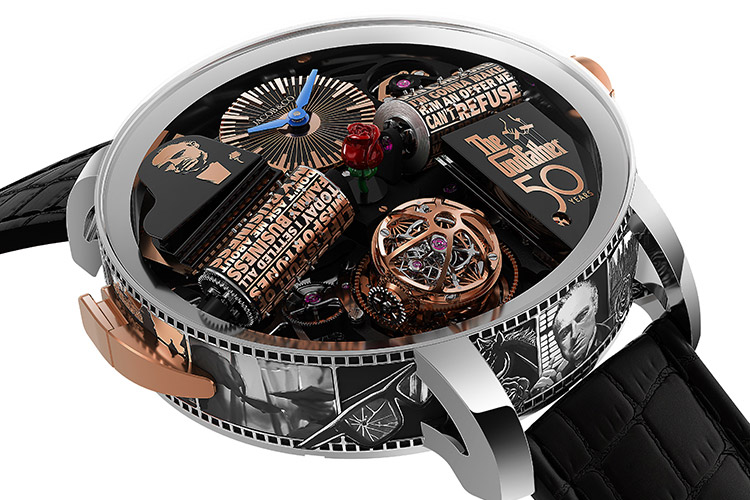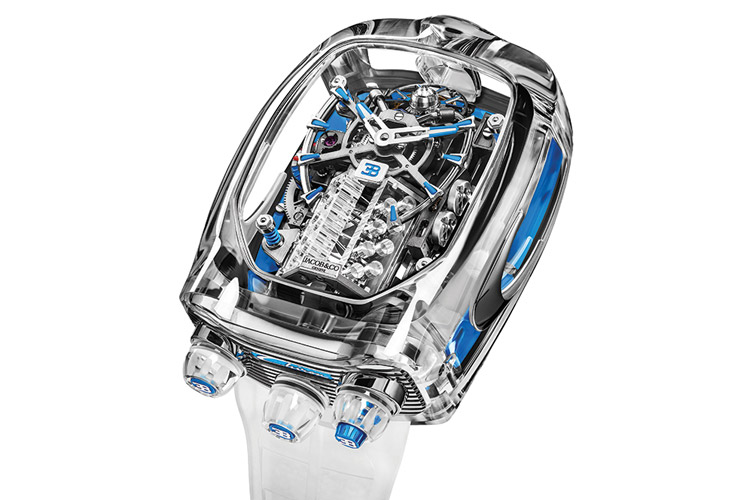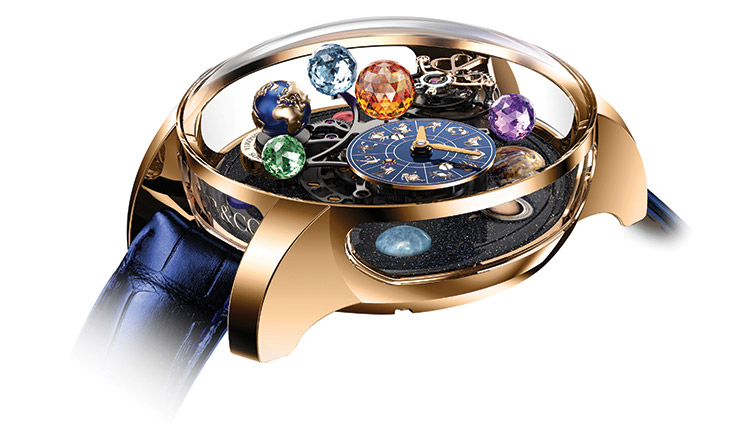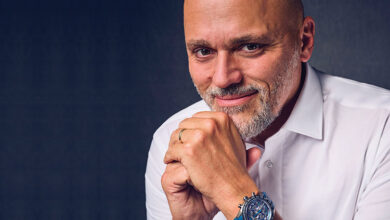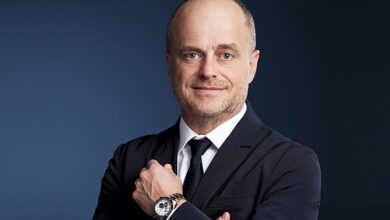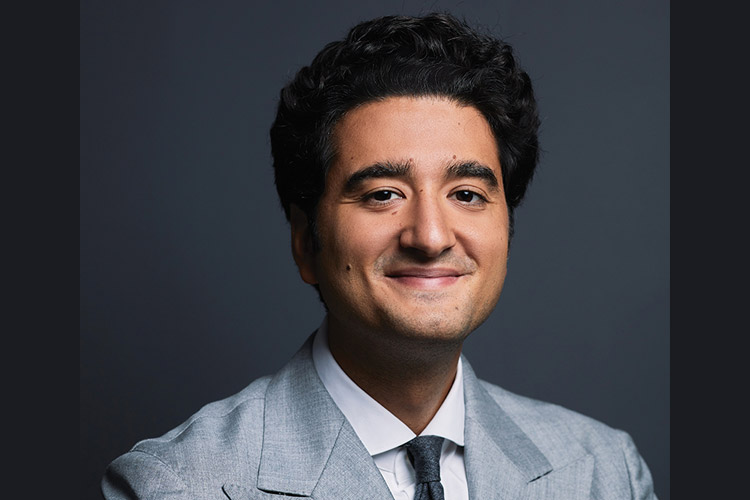
It was in 1986 that Jacob Arabo founded his eponymous brand, in an effort to create the kind of jewellery he wanted to. Once established as a jeweller, he went back to his first love – haute horlogerie – and since then has been pushing the boundaries of watchmaking. The maison, which has a star-studded client list, offers stunning complications such as the Astronomia, Twin Turbo, and the Opera. The marque recently unveiled the World Is Yours Dual Time Zone and the Astronomia Revolution. We spoke to Benjamin Arabov, CEO of Jacob & Co., during Dubai Watch Week
Can you tell us first about the Astronomia, the watch that put Jacob & Co. in the list of high watchmakers. Can you tell us how the project began?
Jacob has always been fascinated by spaceships, constellations, and the solar system, and he designs all of his products from a source of inspiration like “The Godfather”, his favourite movie, while the Twin Turbo was inspired by super cars. In the Astronomia, he wanted to recreate, reimagine his passion and curiosity of space exploration, constellation, and the Solar system into a watch. And that was the initial design inspiration for the time piece and then, it kept evolving and evolving into crazier pieces – everything you could imagine.
Was he scared when the watch was launched? Because the price point of the watch without diamonds was on the extreme high end on the price bracket for Jacob & Co.?
I think if you asked Jacob if he was ever scared of anything. He probably would say no.
And out of all the Astronomia editions, which one is your favourite and why?
The Astronomia Solar is my favourite. And that is because, first, it is a smaller size at 44mm; also, I feel it is more creative as it is a complete solar system in a watch. You have the base plate that is turning counterclockwise while the movement itself turns clockwise and it gives you the illusion that you have planets revolving around the sun right inside of a watch. This is crazy. It was also way ahead of its time in terms of innovation and creativity, so that would be my favourite one.
The movement used in the Astronomia has been produced by Jacob & Co. for a long period now; will there be a successor to the Astronomia?
Yes, we’re launching it next year at Watches & Wonders and it is crazy.
The Bugatti Chiron attracted a lot of attention when launched, especially because of all the moving parts that mimic the engines. What were the technical difficulties in having so many moving parts?
Well, the engine was a first-time achievement for us, and I even remember talking to the watchmakers who had produced the parts and put it all together. When they first did it, they didn’t know if it would work or not. And that is the beauty of innovation, of creating something that has not been done before, and figuring out how to manoeuvre the pipes. There is also a system within the watch where you turn one of the crowns clockwise to align the power reserve for the time and then counterclockwise to align the power reserve for the engine. Figuring out that system of back and forth was also a challenge because crowns usually can be wound only one way.
Is there a button to switch the crown function?
No, and it’s a beautiful thing to see. Because that crown is connected to a part and when you rotate it clockwise you see it turning a particular way, which results in winding the power reserve for the time. And then, it rotates the other way for the engine; so, we have one barrel that is just focused on the engine and one barrel that is focused on the time and you see them spinning as well. Creating that was also tough.
That watch had so many moving parts, so when the engine is actually working, it seems as if the whole watch is alive.
Yes, it is crazy because the tourbillon is moving, as is the engine, as well as the barrels that move when you turn the crown. And that is why it caught so much attention, because it had never been done before. It is such a good reinterpretation of a Chiron car, but inside of a watch. And that was the goal. I remember when they designed it, it was after a day spent visiting the Bugatti manufacture in Molsheim and Jacob saw the parts of the car. The whole car was in parts about to be assembled, with the exterior, the engine, and the interior – all yet to be assembled. He saw all these laid out and he was like, “Ok, I want to take the engine, I want to take this part, this part and this one.” And boom! Two years later, we had the Bugatti Chiron timepiece.
The Twin Turbo has 800 parts in the movement that features a tourbillon, a minute repeater and a chrono monopusher; how long did it take from the concept to the watch? And who handled the design?
It took us three years; it was Jacob who handled the design and his vision was to create one of the most complicated timepieces in the world. And he did; it is a combination of every complication possible.
Your Opera line combines a watch with a music machine; which version was the most successful of the Opera family? The Godfather?
It is definitely the Godfather. We have sold over 200 units already. It is a high complication piece, with a high price.
Can we expect any more watches based on iconic movies, say like “Star Wars” or “Jaws”?
Yes, we are working on a second version for “The Godfather” and it is going to be crazy. Right now, we are not working on any other movies for the Opera collection; we have already done the Godfather and the Scarface Opera. It is because we are looking to develop the same concept in a smaller size, so we are working on a few different ideas.
Is it correct that Jacob & Co. is now aiming to make all of your watches smaller, more wearable – making them more of daily-wear watches? How hard is that as these movements are very complicated?
Oh, it is a lot more difficult; when you have more space, it is a little bit easier to fit in all the parts, just like everything in life. The bigger it is, the easier it becomes; the smaller it is, you have to be more creative in figuring out how to fit them all in. We made a decision a couple years ago that we would only focus on developing timepieces that are 44 millimetres or less. For instance, our Batman watch is 44mm. Any new developments that we are working on, for the next year, for example, the new developments, the successor of the Astronomia will be 42 mm.
Wow, 42 mm? It would still have all the functions of the Astronomia in a smaller movement that fits in a 42 mm timepiece?
Yes, and I think it is going to be our most successful watch life by far.
